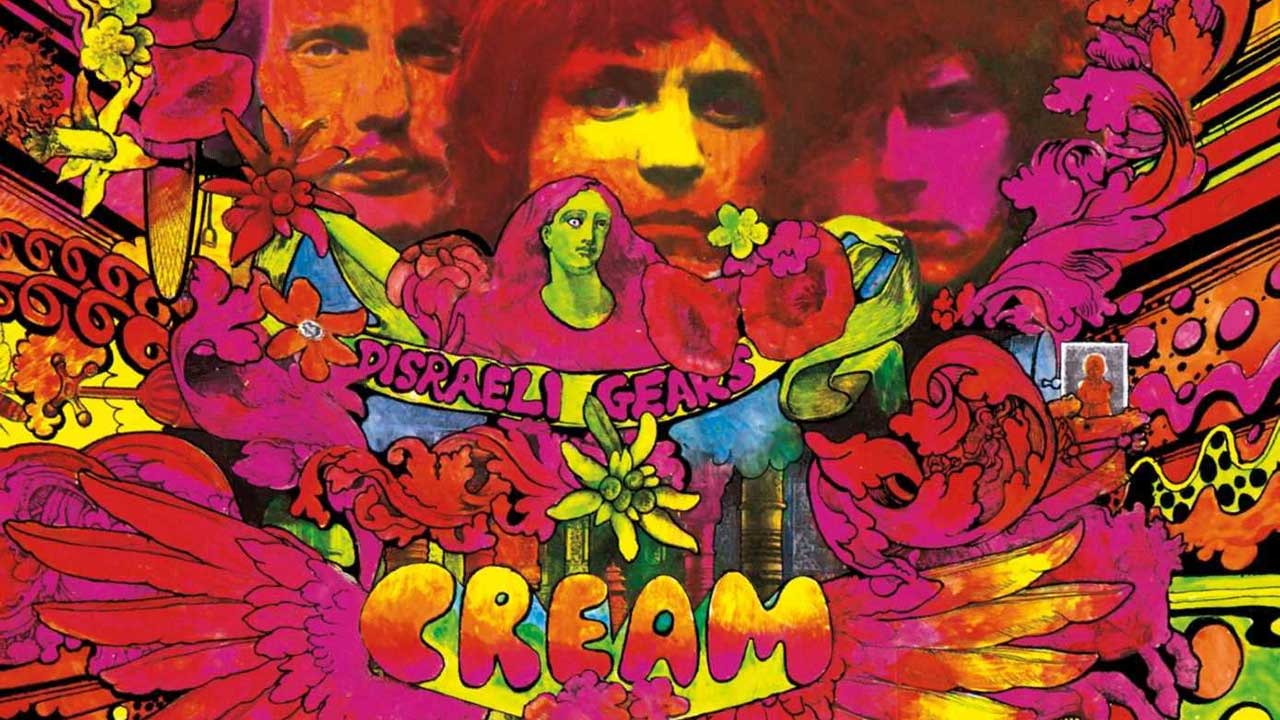The story behind the album cover: Cream's Disraeli Gears
How an Australian in London provided the lyrics to a Cream song, then chose a Cambodian sculpture to inspire the Disraeli Gears cover art

A chance meeting at London's Speakeasy nightclub in early 1967 led to Cream guitarist Eric Clapton asking the late Australian ‘pop’ artist Martin Sharp to create the cover to Cream’s psychedelic masterpiece Disraeli Gears.
“I just started chatting to Eric,” Sharp told Classic Rock in 2003, speaking from his art studio in Sydney, Australia. “I told him I had written a poem. He in turn told me he’d written some music. So I gave him my poem. Two weeks later he turned up with it [Tales of Brave Ulysses] on a B-side of a 45 record”.
Clapton moved Sharp into a studio apartment on London’s trendy Kings Road and asked him to create a cover for Cream’s next album.
“Originally Robert Whitaker took some photos from one of their tours,” Sharp said, explaining how the artwork came about, “but they ended being used for the back cover instead.
“So I got hold of a publicity shot and cut it up, along with cut-outs from various books, laid the pieces out and stuck them together as a collage on a 12-inch square. I did some drawing outlines, and then painted all over it with fluorescent inks and paints of the time. I really wanted to capture that warm electric sound of their music in the colours and expression of the cover”.

The inspiration for the Disraeli Gears cover had come to Sharp while he was visiting Cambodia: “On my way to England I’d gone there,” he recalled. “And in one of the towns I visited there were these amazing sculptures with faces on each side, and huge trees growing out on top of these sculptures.
"Over the years these great trees had taken root and grown. I suppose I thought that was a bit like the band, where you could see three of their faces, and the music coming out of their heads”.
Sign up below to get the latest from Classic Rock, plus exclusive special offers, direct to your inbox!
Sharp soon received another commission from Clapton, for the cover of Cream’s next record, the half-live/half-studio double album Wheels Of Fire. Sharp continued his art for various other artists over the following years, the bulk of which were spent working with American oddball Tiny Tim. He passed away in 2013.
The original version of this feature appeared in Classic Rock 56, in June 2003.
Classic Rock is the online home of the world's best rock'n'roll magazine. We bring you breaking news, exclusive interviews and behind-the-scenes features, as well as unrivalled access to the biggest names in rock music; from Led Zeppelin to Deep Purple, Guns N’ Roses to the Rolling Stones, AC/DC to the Sex Pistols, and everything in between. Our expert writers bring you the very best on established and emerging bands plus everything you need to know about the mightiest new music releases.

